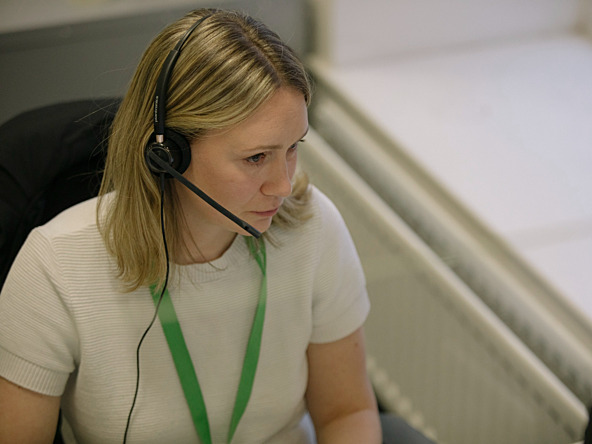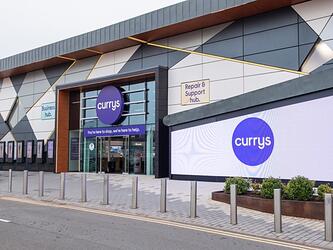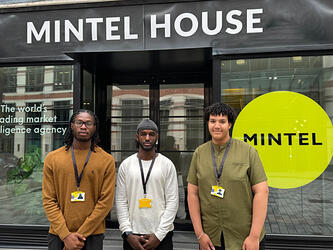A child’s view: How NSPCC uses insight

Of all his work as a journalist and political organiser, Reverend Benjamin Waugh’s greatest accomplishment was arguably establishing the NSPCC, or the National Society for the Prevention of Cruelty to Children. The NSPCC, set up in 1884 as the London Society for the Prevention of Cruelty to Children, is the only children’s charity in the UK to have statutory powers to safeguard children at risk of abuse.
Much has changed since 1884, societally, culturally, technologically and legally, but the NSPCC’s work has evolved with the times, with Childline, a free counselling service for children and young people, joining the NSPCC in February 2006. But one thing has not changed – the charity’s need to engage with the public for the benefit of children.
Insight has a big role in helping the charity to reach out to supporters and beneficiaries, albeit within the tight budget to be expected of an organisation operating in the sector. If anything, the charity’s insight function is encouraged to be more creative to achieve greater impact given the reduced resources. This has stretched to analysing how the charity talks to specific groups – such as new fathers or at-risk children – and also wider communications with supporters and potential supporters across the country.
“The way that young people donate now is very different to how older people donate – this isn’t just the NSPCC but all charities,” says Rachel Congdon, senior manager consumer insights at the NSPCC. “The economic situation doesn’t look like it’s getting better any time soon. That’s why we are thinking about turning consideration into preference or action – there are fewer people giving money.
“At the moment, what’s happening is there are fewer people [giving] but the donations they are giving are bigger, which is bolstering the whole sector. How do we bring in more people and diversify so we’re able to capture younger people?”
Strategic goals
Congdon sits in the consumer insights team, reporting to the head of marketing, and has a relatively small team of three staff to work with. The charity also incorporates a separate research and evidence team, focused on service evaluation and development, as well as research about the charity’s cause.
The consumer insights team looks at research with external audiences and supporters, focused on bringing in donors and service users, and works with departments such as fundraising, communications and marketing, as well as the charity’s helplines, including Childline.
The charity has multiple focuses in any one year, such as specific campaigns, that require the attention of the consumer insight team. Outside of four brand trackers – one focused on supporters, one on people working with children, one on children and a final one looking at the overall NSPCC brand – “almost everything else is very changeable”, says Congdon. The brand trackers themselves are relatively infrequent; the main brand tracker runs twice a year, the others once a year. The team’s other main tasks include creative testing and new product development, and on top of that, a “rolling carousel of projects”.
“We, as a team, don’t have a massive research budget,” says Congdon. “Outside the brand trackers, we tend to commission one or two pieces of research a year based on what we think the organisation needs. But lots of other teams will come to us with budget.”
“We don’t commission research that won’t be significantly used to change what we do.”
One example is recent research for the NSPCC Helpline, which sought to better understand what teenagers today want from the helpline. “Young people are much more conversant with social media and instant messaging, while ‘Helpline’ implies it is a telephone service,” says Congdon. “We wanted to understand more about barriers and motivations, and what we needed to put in place to make the Helpline fit for the future for young people.”
The project finished earlier this year, and underlined the continued value of the helpline, with younger people eschewing the need for an updated platform, such as adopting messaging functions. “What was really interesting and quite surprising, I thought, is that young people still wanted to be able to contact the Helpline via a phone call,” Congdon explains. “There’s a perception, and a need, that if there’s something that you need to talk about, a phone call and a conversation with a real person, in real time, is the method that young people want to use, even though that might not be the way they may be used to communicating in other areas of their life.” The project, carried out with service users, even supported retaining the name, and avoiding a costly rebrand.
Because there are only occasional tracking projects, the consumer insight team spends a lot of time analysing data held by the charity and testing new ideas. For example, on the supporter tracker, the data shows there is a demand from the wider public to make communications more “locally relevant”. The charity has now tailored its supporter communications regionally, with messaging looking at action in people’s local areas, and that metric has now seen greater satisfaction with the charity’s work in this area. “Because we don’t have huge research budgets, we try to get every penny of value from the research we do,” says Congdon. “We really think about the results and what we need to do to action what the results are telling us.
“The work we tend to do are things that will have a significant impact. We don’t commission research that won’t be significantly used to change what we do.”
Every penny counts
Working in a charity combatting child abuse means research often covers extremely sensitive, and distressing, topics. Congdon says that the organisation has a “very vigorous research ethics process”, adding that the burdens on researchers and participants are considered in every project, with processes in place to make sure there is truly informed consent for research before the programme begins.
People taking part in any research project can opt out at any time and re-consenting also takes place. “Some of the topics can be quite difficult,” says Congdon. “It is making sure that our research is trauma-informed, and that we ask questions in a way that is not going to re-traumatise people and will not cause undue distress. We go the extra mile to make sure our research is the best quality it can be.”

Does Congdon feel any additional pressure from the charity’s funding model? “I remember all of the time that the money we have is coming from someone donating,” she says. “I feel that we have to be frugal and get the maximum value for money from what we do. It’s our responsibility and duty to make sure that spending that money counts.”
As a result, there is a large focus on how to bring in donations, or, as Congdon says, how people “move through the consideration funnel” and choose to donate to the cause. “Children, as a cause, are highly motivating for many people – we know that children are the second most popular cause after health charities,” she adds. “Getting people from that general level of warmth to ‘I want to make a donation’, how we move from broad consideration to preference, is one of the things we’re really thinking about at the moment.”
This need to expand engagement with the charity has seen one key project, first initiated four years ago and recently having come to fruition, seek to increase engagement with the charity’s parenthood materials among dads. NSPCC runs a Look, Say, Sing, Play programme to help parents interact with their children for the purpose of brain development, but 90% of users were women. The charity wanted to increase the number of men who engaged with services and materials associated with the programme, and the consumer insight team were asked to find out what some of the barriers to entry were for dads.
The team decided to adopt a qualitative approach, running focus groups of six people per group, all of whom were the parent of a child aged under two, with a mix of first-time dads and those with multiple children. A male researcher was chosen as a moderator to help the men talk openly and honestly among themselves. “We wanted to create a community experience – almost like a mother and baby group, except a father and baby group,” says Congdon. “Dads talking to each other about the experience of being a new dad; being able to bounce off one another and find common ground, so there would almost be a community within the research.”
The research showed that men often feel excluded from the journey to parenthood and beyond. “It is very easy as a society to dismiss dads,” argues Congdon. “What this research made me realise is that men are structurally excluded from the parenting journey.
“From the moment their partner is pregnant, women are invited to antenatal appointments. There are moments like the scan where the dad is actively encouraged to go, but if a woman had six antenatal appointments, that’s six interactions men are not having.
“Even by the time the baby is born, dads are one remove from where mums are. That idea of inclusion became really important. If men are going to be an equal parent, they need to be treated as an equal parent from the moment of conception onwards.”
The project found that the materials offered by the NSPCC were an issue, many of which showed mums interacting with children alone indoors, while the focus groups showed that men wanted to do more outdoors activities and spend time as a family group. “What we were presenting was not what men wanted to do,” explains Congdon. “Men wanted to do things that were active, physical and which involved the rest of the family, that wasn’t just them sitting on the floor in the house.”
As a result, the charity changed the materials, taking on board the feedback from the research and highlighting how the insight team could achieve positive change without maximum resources. “It is easy when you are presented with a brief and a budget to feel limited to a specifically small range of things,” Congdon adds. “Always be open to questioning the brief and thinking creatively about how it could work, and not to be tempted to take the easy way out.”
Ultimately, with budgets constrained, it is a challenge for any insight function to achieve tangible impact. However, Congdon says that the team has a mindset of trying to achieve more with less, and to carry out projects and work the team is proud of and which benefits the charity and its beneficiaries. “As a team, we frequently do things that are not the easy option because they feel like the right one, even if it means creating some headaches for ourselves,” she adds. “If it leads to better work at the end, we are always willing to do that.” With the economic situation likely to stay precarious for the foreseeable future, it is vital that insight continues to keeping punching above its weight.

We hope you enjoyed this article.
Research Live is published by MRS.
The Market Research Society (MRS) exists to promote and protect the research sector, showcasing how research delivers impact for businesses and government.
Members of MRS enjoy many benefits including tailoured policy guidance, discounts on training and conferences, and access to member-only content.
For example, there's an archive of winning case studies from over a decade of MRS Awards.
Find out more about the benefits of joining MRS here.














0 Comments